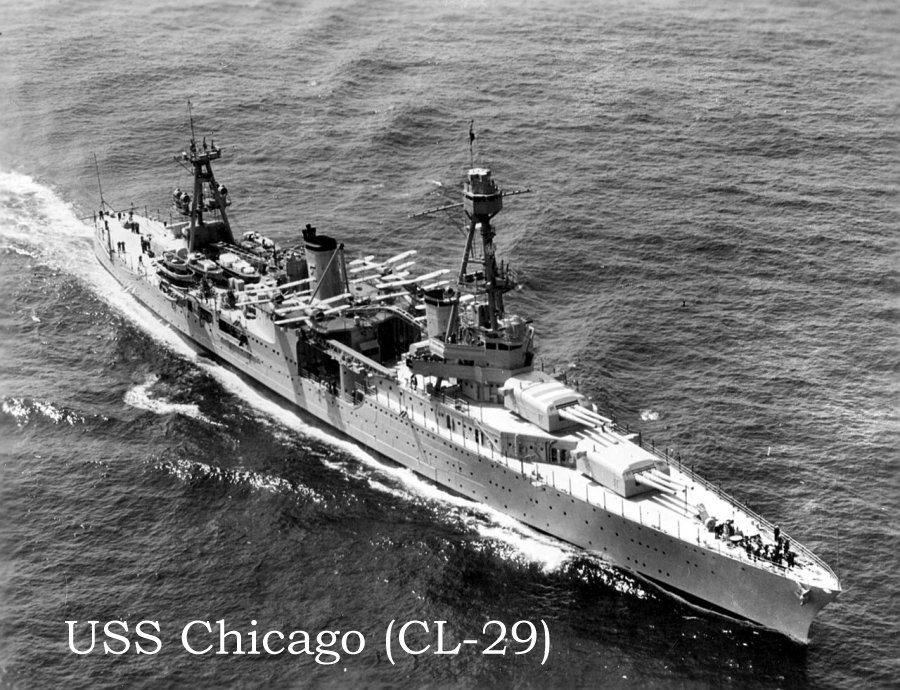MessageTo Eagle.com – On January 29-30, 1943, the naval Battle of Rennell Island was fought off Guadalcanal.
It was the last major naval clash between U.S. and Japanese forces during the Guadalcanal campaign of World War II.

At the beginning of 1943, the Japanese were gathering shipping at Rabaul, Buin, and Java for the evacuation of their forces from Guadalcanal, but the United States assumed that this maneuver was a major Japanese effort to reinforce the Rennell Island, located in the southern Solomon Islands.
Although the Japanese were close to defeat on the island, they still had strong forces in the area, and American reinforcements were still needed on the island.
Accordingly, in late September a troop convoy was dispatched towards Guadalcanal from the south, protected by an escort group provided by cruisers and destroyers from Task Force 18, which included the heavy cruisers Wichita (the flagship), Chicago (CA-29) and Louisville (CA-28), the Cleveland class light cruisers Cleveland, Columbia and Montpelier and the destroyers Waller (DD-466), Chevalier (DD-451), La Vallette (DD-448) and Edwards (DD-691).
Also other American ships – like the carrier Enterprise – were in the vicinity to participate in the battle.
The Japanese aircraft involved came from the land-based 701st and 705th Kokutai. They found the American escort ships to the north of Rennell Island (Mangana, the southernmost of the Solomon Islands, 120 miles to the south of Guadalcanal).
The first attack came on the evening of 29 January. A number of Japanese aircraft were shot down, but two of them crashed into the sea behind the Chicago, and she was silhouetted against the flames. Mitsubishi G4M-l ‘Betty’ Bombers from the 701st Kokutai hit the Chicago with two torpedoes.
The first hit, at 19.45, stopped three of the cruiser’s four drive shafts, while the second hit between number three fireroom and the forward engine room. The Chicago was left dead in the water, although her damage control parties were able to bring her back onto the level.
Soon after this the Japanese attack ended and the Japanese did not renew their attack until the afternoon of 30 January.
The Chicago was already 30 miles to the east of Rennell Island, being towed by the tug Navajo (AT-64) and the destroyer La Vallette (DD-448) when twelve ‘Betties’ – land-based bombers used by the Imperial Japanese Navy Air Service – were detected to the south of New Georgia heading for the damaged cruiser, at 14.45.
A combat air patrol of F4Fs from VF 10 on USS Enterprise intercepted the Japanese bombers, but were only able to shoot down three of the twelve. Anti-aircraft fire from Task Force 18 claimed seven more, but the remaining two aircraft scored two more torpedo hits on the Chicago.
This time the damage was too severe to be repaired, and the Chicago had to be abandoned, sinking stern-first at 16.44. The La Vallette (DD-448) was also hit by a torpedo which killed 22 and meant that she too had to be towed away from the damage area.
This ended the battle. Although Task Force 18 had been forced to turn back, and had suffered the loss of the Chicago, the transport ships reached Guadalcanal safely.
The Japanese successfully evacuated their remaining troops from Guadalcanal by 7 February 1943, leaving it in the hands of the Allies and ending the battle for the island.
MessageToEagle.com
Expand for referencesReferences:
S. C. Tucker,World War II: The Definitive Encyclopedia and Document Collection






